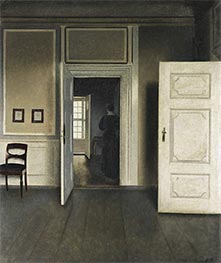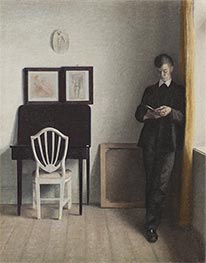
Vilhelm Hammershoi Painting Reproductions 3 of 3
1864-1916
Danish Symbolist Painter
51 Hammershoi Paintings

Interior. Strandgade 30 1901
Oil Painting
$1105
$1105
Canvas Print
$77.93
$77.93
SKU: HAV-17352
Vilhelm Hammershoi
Original Size: 66 x 55 cm
Stadel Museum, Frankfurt, Germany
Vilhelm Hammershoi
Original Size: 66 x 55 cm
Stadel Museum, Frankfurt, Germany

Interior. Strandgade 30 1904
Oil Painting
$1032
$1032
Canvas Print
$77.25
$77.25
SKU: HAV-17353
Vilhelm Hammershoi
Original Size: 55.5 x 46.4 cm
Musee d'Orsay, Paris, France
Vilhelm Hammershoi
Original Size: 55.5 x 46.4 cm
Musee d'Orsay, Paris, France

Interior with a Reading Young Man 1898
Oil Painting
$1118
$1118
Canvas Print
$73.34
$73.34
SKU: HAV-17354
Vilhelm Hammershoi
Original Size: 64.4 x 51.8 cm
Private Collection
Vilhelm Hammershoi
Original Size: 64.4 x 51.8 cm
Private Collection